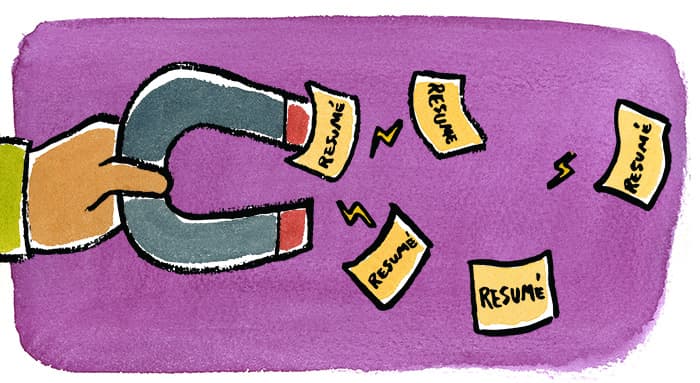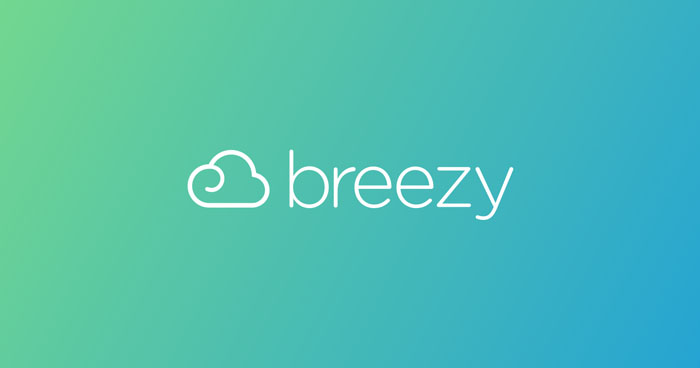
It’s that time again! The new year is upon us and growing companies want to know — strike that — they need to know what’s brewing in HR compliance for the next 12 months.
Because, while it certainly isn’t the sexiest people ops topic on the 2022 agenda, your ability to master workplace compliance issues can make or break your business.
So, just what are the top HR compliance challenges to look out for this year?
We asked several leading HR managers, legal pros, and trend-watchers for their insights and predictions on the top HR compliance practices tipped to shape the workplace in the months ahead.
And as you can probably guess, many of the issues cropping up for 2022 look quite a bit different from the pre-2020 days.
NOTE: While we always aim to provide you with the most valuable and reliable information on all things HR, we are not legal professionals. Nothing you read here should be considered legal advice. Always seek professional legal advice to keep your company compliant.
HR compliance challenges for 2022? Yep, the pandemic hit those too.
Between a stark increase in data breaches sparking increasing concern over employee privacy laws, a controversial vaxx mandate, and an ongoing debate over employee pay and the minimum wage — there has been no shortage of compliance hurdles over the last two years.
While many of these issues break down into familiar categories, such as:
- Recruiting and hiring
- Workplace policies and procedures
- And keeping up with state and local mandates…
we’re now seeing new compliance challenges entering the spotlight, including:
- Worker demands and expectations
- New healthcare regulations
- Increased focus on Diversity, Equity & Inclusion (DEI)
- Cybersecurity issues
- 2022 employment laws
- And more
So now that you’ve got the tl;dr, let’s dive into the many ways the pandemic has redefined work as we know it and stirred up a whole new set of compliance issues for the new year.
Masking, testing, and vaccinations: HR compliance just got real
Getting the pandemic under control (or at least semi under control) didn’t stop with mask-wearing, social distancing, and working from home (WFH).
In September last year, the Biden administration announced it would require employers with 100 or more workers to make vaccinations or proof of regular testing mandatory. The Occupational Safety and Health Administration (OSHA) quickly followed with its own rules on COVID-19 testing and vaccinations.
These vaccination and testing mandates were scheduled to finally take effect in January. But a federal judge stepped in to halt their enforcement.
While the final ruling is now predicted to be released in early February, many employers have chosen to get a step ahead of potential compliance issues by enforcing the rules early.
As you might expect, this opens up a whole host of new compliance issues as organizations scramble to create their vaccination policies, including clear processes for reviewing weekly COVID-19 tests, proof of vaccination, and providing paid time off for employees to get vaccinated.
Needless to say, it’s a lot of extra compliance work.
“With the availability of vaccines and Covid still plaguing the world, employers will be working diligently to create fair, equitable, and safe practices to keep their employees safe. This can be especially challenging for companies whose workforce is primarily remote.”
— Jewel von Kempf, Head of People, Coinme
Jewel von Kempf, Head of People at popular bitcoin app Coinme, believes the struggle is especially real for employers with a remote or hybrid workforce who will have to collect this information securely, while complying with state and local employment laws in unfamiliar jurisdictions.
“We will most likely see HR collaborating with leadership and security teams to build a more secure work environment by creating more robust cyber security practices and rolling out secure HR technologies to protect data and employee privacy,” she explains.
Employee backlash and lawsuits
Even before the Biden plan was announced, more than a few public and private employers had already exercised their legal right to make COVID-19 vaccinations and regular testing a condition of employment.
From a compliance point of view, employers may need to make allowances for workers who refuse the vaccine based on their medical conditions or religious beliefs.
Employers who don’t accommodate these workers could face charges under federal anti-discrimination laws, like Title VII of the 1964 Civil Rights Act and the Americans with Disabilities Act (ADA). Depending on where they’re based, they could also be charged under state anti-discrimination laws.
“Employment lawyers are more likely to be current on local, state and federal laws and regulations and can help your SMB operate in a consistent way to avoid litigation.”
— Sarah Sepasi, Founder & Managing Attorney, Sepasi Legal, P.C.
In fact, legal experts like Sarah Sepasi, Founder and Managing Attorney at California-based firm Sepasi Legal, P.C., cited one of the top 2022 HR compliance issues as failing to address exposure to workplace litigation — an especially high risk factor for small and midsize businesses.
Sepasi suggests getting legal advice or at least having an employment attorney review your company’s policies, procedures and employee manual to help keep the risk of litigation to a minimum.
New year HR trends = new year compliance issues: Record quits, WFH, and women in the workplace
Apart from the obvious compliance issues sparked by COVID-19 safety measures, many of 2022’s biggest HR trends are also byproducts of the last two years.
And first on the list, is WFH.
With 9 out of 10 workers now saying they prefer working from home, employers can expect 2022 to be another pro-remote year among candidates and employees.
But WFH isn’t without its compliance complexities.
According to Roberto Cruz, People2.0’s VP of Independent Contractor Compliance and Senior Legal Counsel, despite its border-free nature, remote work can have regional complications.
"As more workers are remote, using out-of-country resources will require knowledge of local laws that are often very complex. You’re not necessarily flying every worker to your headquarters anymore, so you have additional responsibilities and concerns to stay on top of at the country, federal and state level to safely engage workers."
— Roberto Cruz, VP of Independent Contractor Compliance & Senior Legal Counsel, People2.0
Besides staying on top of all the laws and regulations that apply to WFH, drafting a remote work policy to help employees stay connected, engaged and safe while working at home can be a great way to keep your company protected and your remote workers happy.
The Great Resignation and pressure on working moms
In addition to a clogged Suez canal, chronic stockouts, and some serious damage to our social calendars, the pandemic is also credited with prompting employees to reevaluate their personal and work lives.
Last year, employees started quitting their jobs in record numbers, setting off the Great Resignation, which unfortunately continues today. While record quits were particularly obvious in the hospitality sector, few industries were left untouched with approximately 4.4 million resignations reported in September 2021.
Here’s how a media release from The Mom Project, a talent community that helps mothers discover their economic potential, summed up the Great Resignation:
“The pandemic has been hard and heartbreaking for so many, it has shed a light on many of the inequities that exist in the workplace. Companies are in dire need of talented employees, but they will have to re-evaluate many of their antiquated business practices in order to attract and retain them. The power has shifted from employer to employee.”
— Allison Robinson, CEO & Founder, The Mom Project
Exhausted from bearing the brunt of insufficient scheduling flexibility and limited child care options, countless working parents — and especially mothers — decided to take back their power by simply choosing to leave.
The good news? Robinson and her team at The Mom Project identified three non-negotiables that can help employers keep their best people: flexibility, support and autonomy.
Companies that can successfully satisfy these demands will likely have a better chance of attracting and retaining qualified employees.
Recruiting and hiring compliance beyond the pandemic
With the pandemic driving much of the Great Resignation and a dismal addition of only 199,000 jobs to the economy at the end of December 2021, it’s no surprise HR is focused on attracting talent and tackling any compliance issues that come with it.
The latest jobs report from the Bureau of Labor Statistics (BLS) shows that the number of job openings in December slipped from the previous month and that the Great Resignation has finally slowed.
And while the unemployment rate is down to 3.9%, it still remains higher than the pre-pandemic rate of 3.5%. So while there may be hope on the horizon, a talent pool that’s still dwindling and disillusioned at the end of 2021 likely means more recruiting and hiring shortfalls for employers in 2022.
But forward-looking companies aren’t sitting on their hands.
Our HR experts have noted three hiring trends employers can expect to see carried over into 2022:
- Internal hiring - Employers are beginning to hire and promote their current employees for openings rather than always looking to recruit and hire external talent.
- Upskilling current employees - In line with internal hiring, upskilling and training existing staff for openings is another great way that many employers are widening the hiring pool.
- Virtual hiring - Since remote work has become the norm, so have virtual interviews and onboarding — tools that can help employers hire from anywhere.
“Virtual interviews have made it much easier for talented employees to be interviewed [from anywhere] at almost any time of the day…rather than have to sneak away from a boss who is right over their shoulder.”
— Sarah Sepasi, Founder & Managing Attorney, Sepasi Legal, P.C.
Successful recruiting and hiring means finding the best qualified candidate for the job, which may include posting all openings internally and upskilling and training internal candidates.
Of course, it also means complying with the latest OFCCP guidelines and anti-discrimination laws to make sure each candidate is treated fairly in the recruiting process.
Did you know that a smart, easy-to-use applicant tracking system can help you stay compliant with every new hire? You can try Breezy free for 14 days to find out just how easy it can be.
Onboarding & termination
Jody Dietel, VP of Government Affairs at one of the US’s top health savings accounts (HSAs) administrators HealthEquity, sees both onboarding and termination as two of the top HR compliance issues for 2022 — indicating that how you begin and end the employee relationship could be two of the most pivotal HR compliance touchpoints.
“As we’ve seen over the last year with the Great Resignation and vaccine requirements, there are myriad reasons an employee may quit or leave a company. The hiring and firing process was impacted by a variety of external factors over the last year and I expect that to extend into 2022."
— Jody Dietel, VP of Government Affairs, HealthEquity
Dietel suggests that employers streamline their onboarding and termination processes to make it easier to stay compliant from beginning to end. Employers should also make sure that their written onboarding and offboarding policies fully comply with state and local employment laws, and that they are carried out consistently.
New healthcare requirements, new regulations
As if all of the above weren’t enough, our experts indicate that employers should also expect a rollout of healthcare compliance changes to take effect in 2022.
Congress’s proposals for the Build Back Better Act (BBBA) indicate that new employer-sponsored health plan mandates and COVID-19 related rules are on the way.
According to experts like Dietel, employers should be working closely with their plan administrators to make sure documents and processes are compliant with plan changes.
“At HealthEquity, we break down the complicated parts of compliance, and provide materials to our partners so they have resources to share with their employees. Administrators should be making sure employers are apprised of upcoming regulatory changes and sending timely updates on important information."
So where will these compliance changes come from exactly?
Employers can expect new compliance regulations under the Employee Retirement Income Security Act (ERISA). New processes and procedures are slated for tasks like reporting plan details, cost comparisons, and contractual language with insurance vendors in 2022.
If you want to stay ahead of the game, you’ll need to review your benefits plans at least annually to keep up with all the latest regulatory changes.
End-of-year deadlines for some benefit plans, such as retirement plans or flexible spending accounts (FSAs), usually aren’t due until December 2022. Although there are no apparent changes this year, always make sure your organization complies with the Consolidated Appropriations Act (CAA).
Worker classification
Finally, much (if not all) of the HR compliance work employers may face this year will come down to the ways in which they structure and categorize their workforce. Roberto Cruz of People2.0 also named worker classification as a top HR compliance issue for 2022.
“Coming out of a pandemic has left governments making up for lost revenue. One way to recoup [revenue] is to enforce current labor laws or create new ones, making it easier, for example, to fine companies for non-compliance.”
He added that “savvy plaintiff’s attorneys” are using new laws to bring litigation.
Understanding the various classifications of workers, such as the difference between exempt and nonexempt employees and employees and independent contractors may prove crucial to staying compliant with laws covering these worker categories.
Get ahead of compliance complications in 2022
So at the end of all the new trends, regulations and game-changing HR paradigm shifts, how will small and growing businesses make out compliance-wise in 2022?
“In the past, small businesses could reasonably rely on a person in an HR function to manage compliance,” says Sepasi. “This has grown significantly more difficult in the current climate’s overlapping laws and regulations.”
Cruz echoed this sentiment, pointing out that SMBs are at an added disadvantage when compared to larger companies and corporations.
“[SMBs] may not be able to obtain the outside help to comply with labor laws, but they are no less a target for audits or lawsuits,” explains Cruz. “What we’ve seen is that both big and small companies can be fined. The difference may be that large companies are able to withstand penalties that may put a smaller company out of business." Ouch.
Luckily, there is some good news. Experts like Sepasi also recognize that although the past two years have irreparably shaken up the workplace, it’s not all “gloom and doom”.
“The pandemic has created a wave of disruption, challenges [but also] optimism in compliance and employment, which will likely continue into the new year,” she explains.
Now that’s a prediction we can all get behind.





